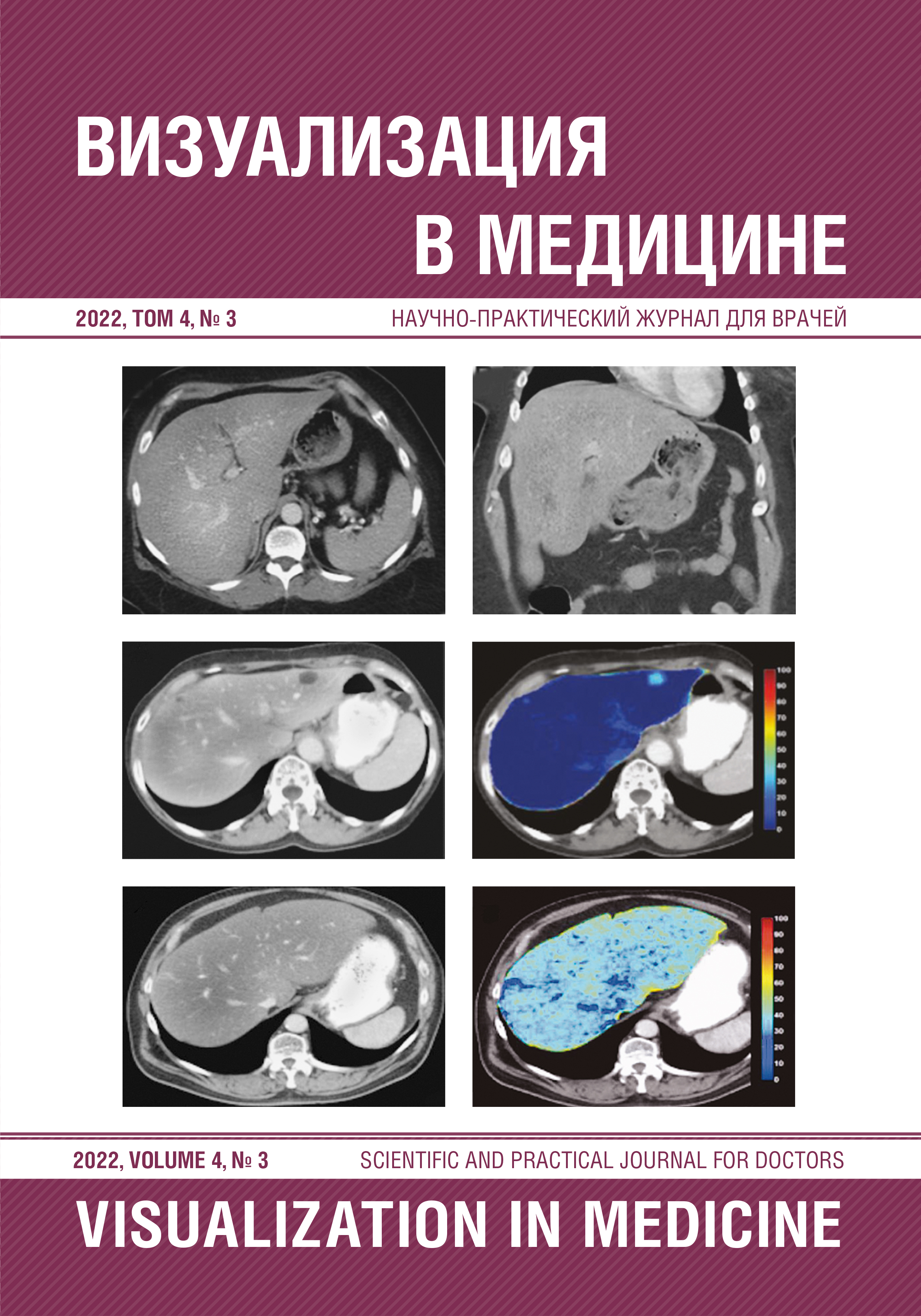СТЕАТОГЕПАТОЗ: ВАРИАТИВНОСТЬ И ВИЗУАЛИЗАЦИЯ ПРИ ПОМОЩИ НЕИНВАЗИВНЫХ МЕТОДОВ, КОМПЬЮТЕРНО-ТОМОГРАФИЧЕСКИЕ ОСОБЕННОСТИ ПРОЯВЛЕНИЯ И ДИФФЕРЕНЦИАЛЬНАЯ ДИАГНОСТИКА НА ПРИМЕРЕ КЛИНИЧЕСКИХ СЛУЧАЕВ
Аннотация
В рутинной практике рентгенолога жировой гепатоз/стеатогепатоз — это часто встречающееся изменение печени, которому долгое время не уделяли особого внимания. С 2000 г. все чаще врачебное сообщество признает клиническую значимость выявления стеатоза в контексте прогрессирования некоторых заболеваний и состояний, например алкогольной (АБП) и неалкогольной (НАЖБП) жировых болезней печени. Ранняя диагностика жирового гепатоза ввиду обратимости изменений печени на определенных стадиях ведет к прогностически более благоприятному исходу, а значит, существует клиническая необходимость в неинвазивных методах его оценки. В данной статье мы рассмотрели проявления жирового гепатоза на УЗИ, МРТ и КТ путем обзора литературных источников по электронным медицинским базам PubMed, elibrary, подробно разбирая на примерах собственной клинической практики особенности дифференциальной диагностики и паттерны проявлений стеатоза при компьютерно-томографическом исследовании.



